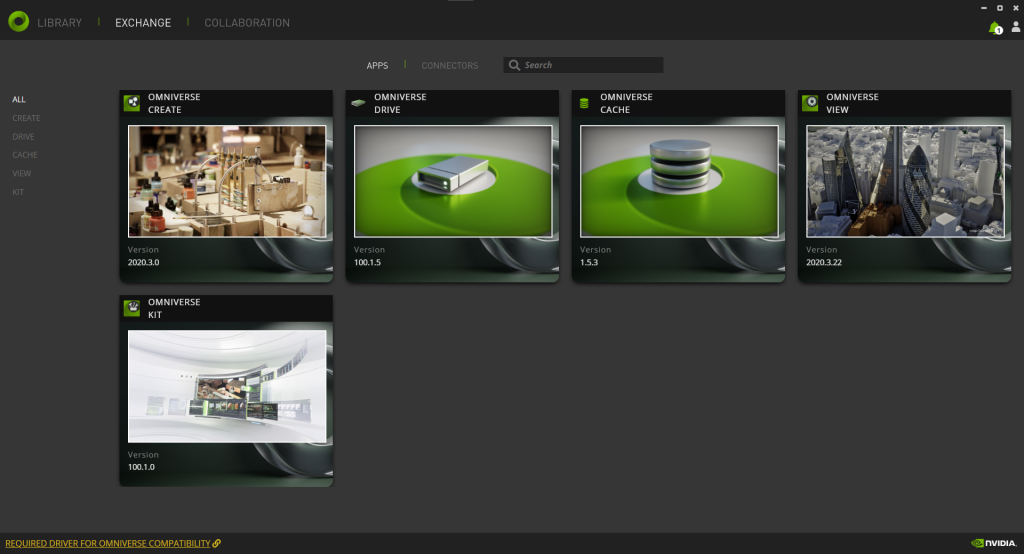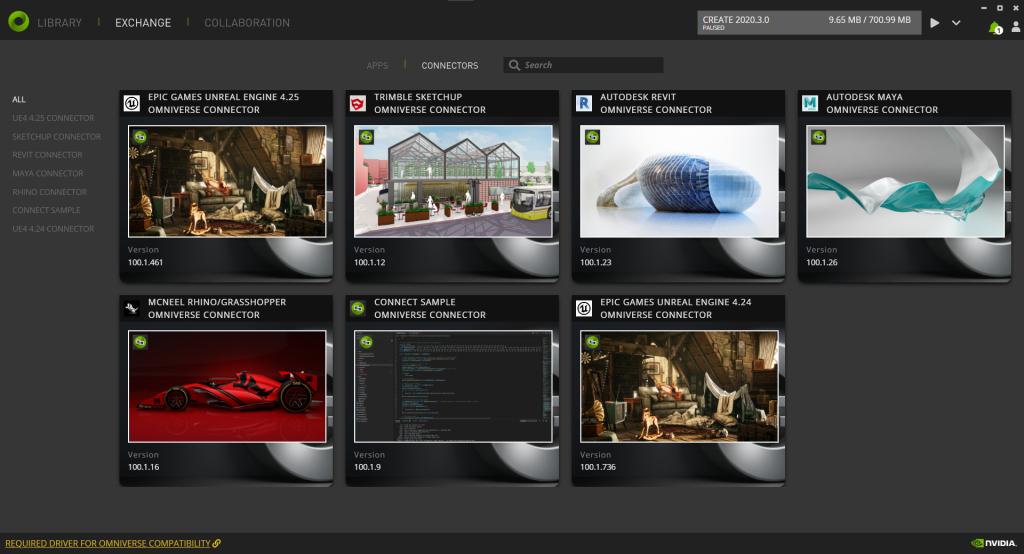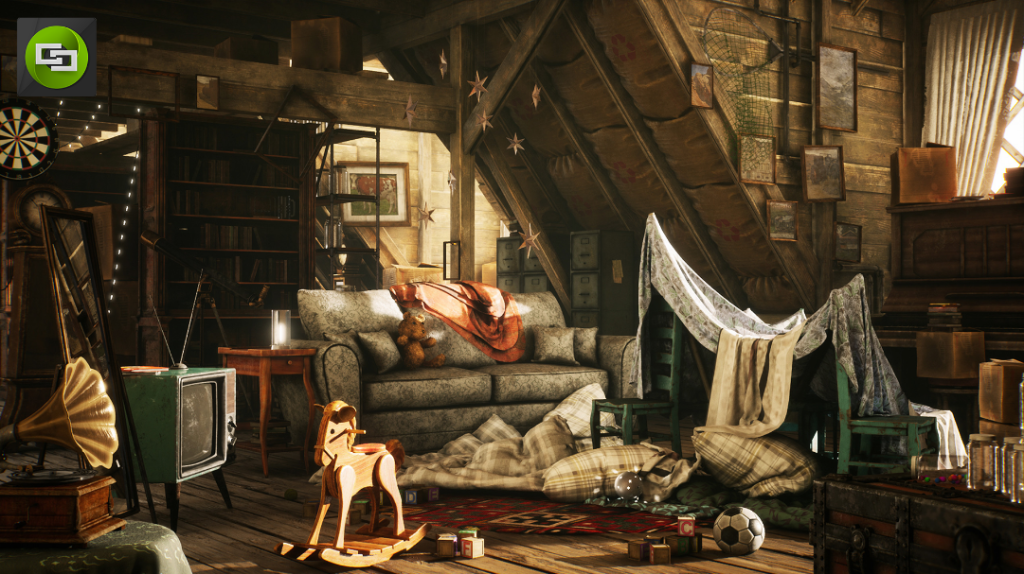NVIDIA’s Omniverse is in open beta. Even saying what it is is hard to do because something like this hasn’t really existed before, but now working together on 3D in real-time got way easier. And if 2020 demonstrated anything, it demonstrated how much creative technology needs that collaboration to progress.
The obligatory NVIDIA marketing video may or may not help, but here it is:
So okay – what is it exactly? Omniverse is a platform for loads of connectors between apps – stuff you already use, from Unreal to Blender to Adobe tools – working in 3D. Work with other people, work with other devices, and do things in real-time but with render quality. Omniverse really wants NVIDIA’s (or AMD’s!) latest RTX GPUs, meaning yes, now is another time to curse the names of whoever is buying the damned things up to resell them above cost or mine crypto or just build some really weird Microsoft Flight Simulator dungeon. But this platform is also built to stream to other devices – meaning there’s a very good chance you can install this open beta, right now, with hardware you already own. And that could help you be ready once those GPUs are more readily available.

Let’s walk through actually installing it, which was my evening project.
First, you’ll need to fill out the usual NVIDIA bureaucracy. You’re able to use an existing account if you created one as a developer and/or user – it retains a single NVIDIA login – but you’ll have to explain to NVIDIA what it is you do for a living. (I swear, downloading pro graphics software starts to feel like visiting your aunt. But tell me again, what do you do for WORK?)
The installer is easy to use, though, and even though a lot of connectors are still listed as “coming soon,” there’s a surprising amount of stuff in there today.
That includes APPS:

Omniverse Create for Windows lets you use Pixar’s rendering platform to do real-time rendering of advanced scenes you put together, all with RTX for photo realism. So… hot damn. As if that weren’t enough, there’s built-in physics and smoke and fire, integration with Houdini, and support for exporting video. There’s even some experimental XR support for tablets. At least on paper (erm, pixels?), it sounds great.
Here’s Create explained:
And a run-down for newcomers to what USD is – don’t worry, not dollar currency conversions, but Universal Scene Description, the foundation for the Spider-Verse. Sorry, Omniverse. Let’s call it “The ‘Verse.”
There’s a viewer and drive and cache tool, too, which help with visualization and asset management in really cool ways.
Developers will want to check out Omniverse developer support (“Omniverse Kit’), which is also there already for Windows – letting you connect your own tools via C++ or Python.
But here’s the exciting bit – there’s also a ton of connectors already available for download right now.

CONNECTORS let you take tools you already use, and add powerful rendering on a server, opening, editing, and sync. And you can start to play with this right now. That means your work machine might be totally separate from the box doing the rendering – a workflow familiar to folks working at the likes of Pixar, but now available to individual artists and small artistic teams, too.
There’s already Unreal Engine 4.25, which lets you export from UE4 to Omniverse and the USD (standard scene description format), SketchUp, and Maya and Revit and Rhino.

I know a lot of people will be excited about what’s to come – Blender, Houdini, that wild-looking Machinima thing. But there’s a bunch there already.
And this will be relevant to creation:
You can play along. (On Windows, anyway.) I should add, too – I expected loads of nags complaining about my NVIDIA driver not working, and running this on a Razer laptop without RTX cards, but you can install absolutely everything. That means there’s really no reason not to go ahead and grab this and start poking around, checking documentation, and seeing stuff in the flesh, as it were. Plus if you do collaborate with artists who have the hardware, you can try the collaboration features (which I’ll be testing, as well.)
You can also just head straight to the documentation online for Nucleus, for instance:
https://docs.omniverse.nvidia.com/prod_nucleus/prod_nucleus/overview/description.html
But whether or not you directly work with this kind of 3D, Omniverse looks worth tuning into.
It’s really built around connecting rendering, collaboration, live interaction, and 3D across a variety of applications in a terrifically open way.
And I think that’s important. We have paid the price of screen life for a generation now without really getting a lot of its benefits. And we’ve often had to do so slowly, without feedback, and without collaboration. What better time than a year when we’ve been cut off from people to reflect on how important that human-to-human interaction is. It’s what pushes art forward. So even though this is just a technology platform and from one GPU vendor, it could be a sign of being able to work together to solve problems and get creative in 3D environments.
Check out the beta, and as usual with beta NVIDIA software, expect to do some driver version juggling. Here’s the latest:
The currently compatible drivers for Omniverse RTX are driver versions between 456.55 and 457.51, as well as 460.89.
The currently recommended driver is 456.71 for most GPUs and 460.89 for A6000 GPUs
But I’m in touch with NVIDIA and hope to cover this more soon.
I’m sure for many CDM readers, people will wonder why we’d cover both analog polysynths and, like, 3D collaboration platforms but … just you watch. It’s all connected. General electronic future immersion.
Thread with more explanation – thanks, Crawford:
And Omniverse page and beta download with more info:
https://www.nvidia.com/en-us/design-visualization/omniverse/